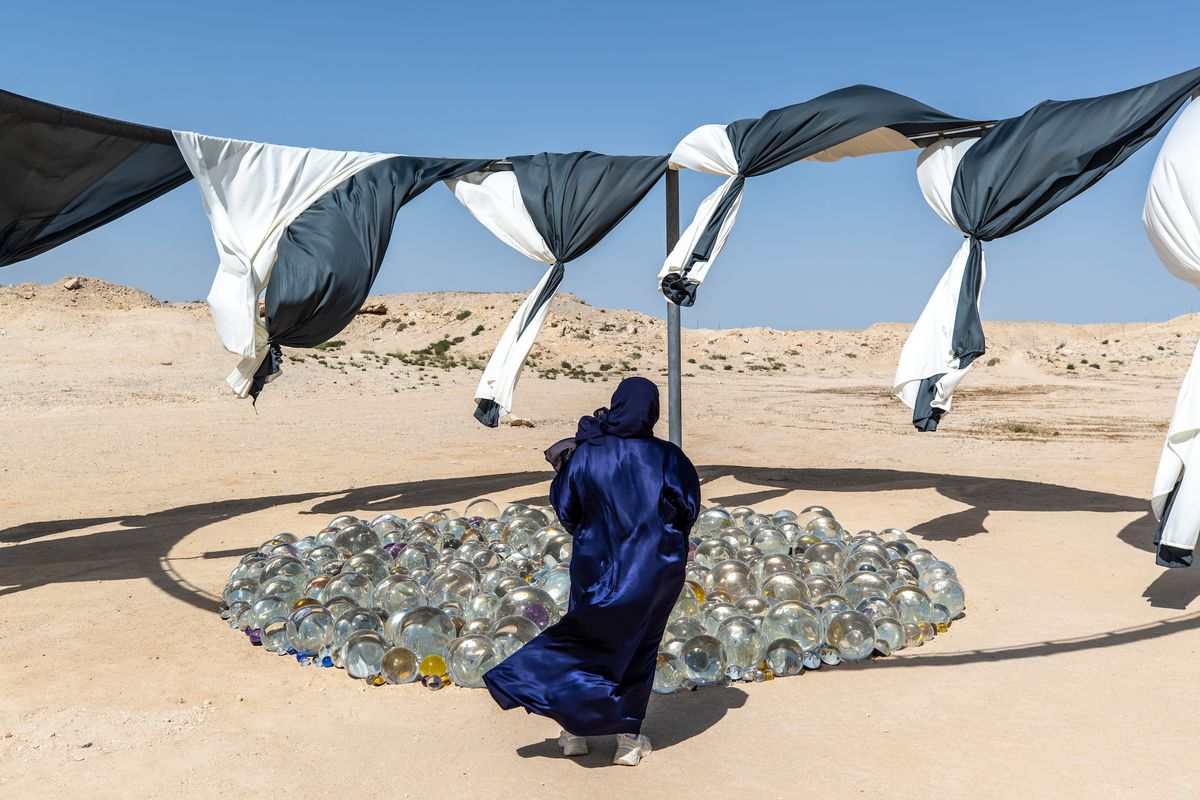In the selfie age, Olafur Eliasson’s experimentation with light and mirrors is well poised for social media virality, but for the multidisciplinary artist, aesthetics are just as important as activism. Last autumn, ahead of the FIFA World Cup, Qatar Museums unveiled Shadows travelling on the sea of the day, a permanent outdoor desert installation, composed of steel and fibreglass structures with mirrored ceilings, which the artist describes as being “about what politics and economy cannot say. It’s about looking down and being connected to the earth”.
This spring, the Icelandic-Danish artist has returned to Qatar for his first exhibition in the region, staged across both the Jean Nouvel-designed, LEED-certified National Museum of Qatar in Doha and the Al Thakhira Mangrove Nature Preserve, a sabkha (coastal sandflat) habitat 64km northeast of the capital. The museum exhibition, The curious desert (until 15 August), brings together works made across 25 years with new pieces that underscore the importance and fragility of the natural environment. The show is part of Qatar Creates, a year-round programme celebrating the nation’s cultural activities.
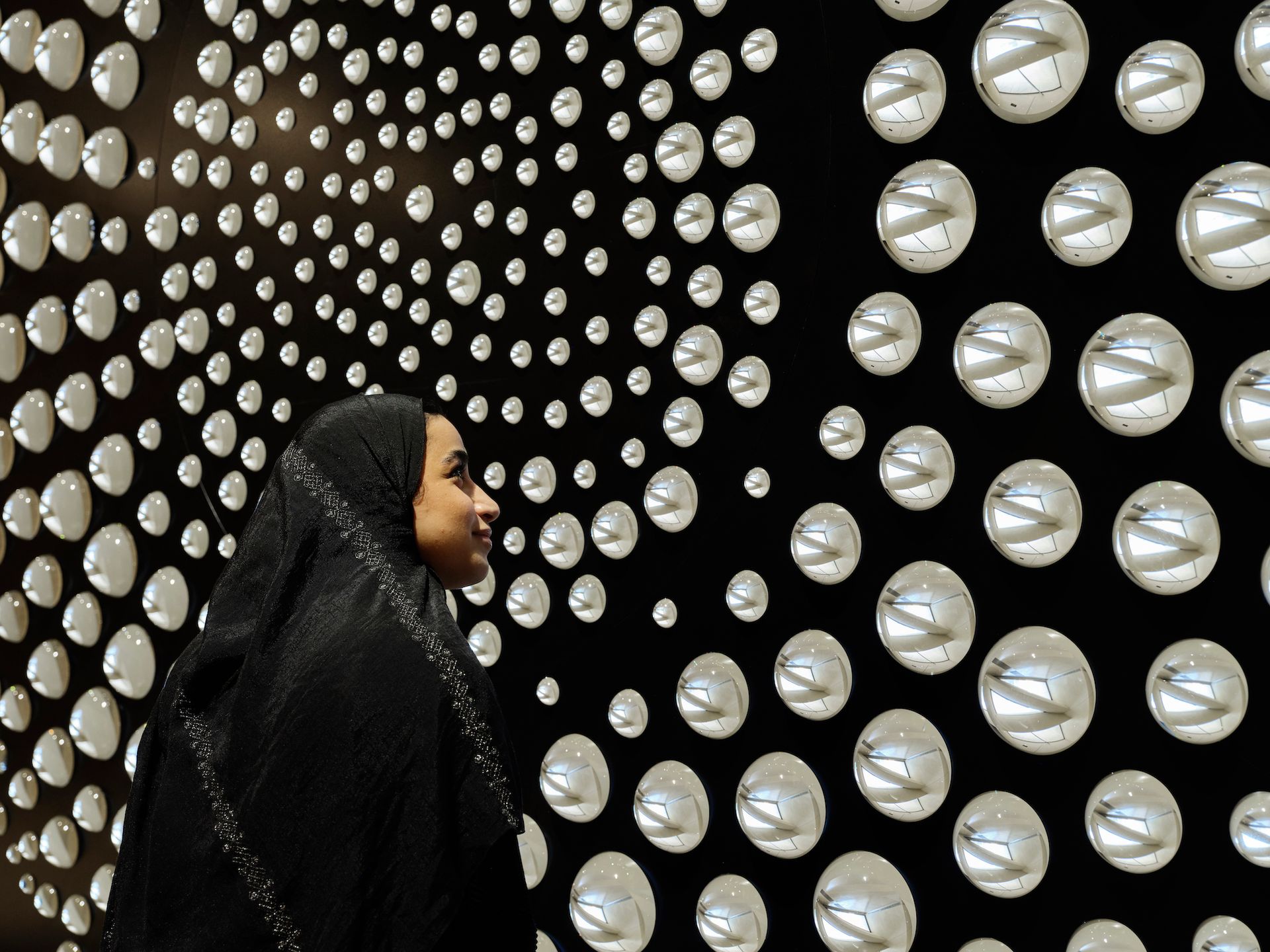
Olafur Eliasson, Algae window, 2020. Installation view, Olafur Eliasson: The curious desert, National Museum of Qatar, Doha, 2023 Photo: Anders Sune Berg. Courtesy of the artist; neugerriemschneider, Berlin; Tanya Bonakdar Gallery, New York / Los Angeles
While much of the museum portion feels like a contemporary art funhouse, brimming with optical illusions and prismatic sensations, one gallery of photography from Eliasson’s native Iceland grounds the viewer in the artist’s mission as an activist (his studio has undergone complete carbon monitoring since 2020). His glacier melt series (1999/2019) demonstrates the effects of climate change on the environment over a 20-year period, while The horizon series (2002) draws parallels between Iceland’s arctic landscapes and Qatar’s desert terrain.
Both in the museum and the desert, viewers are encouraged to explore the mechanics behind Eliasson’s light art and discover how lenses produce magical, ever-changing effects. With The living lighthouse (2023), rotating pieces of coloured glass generate a spectrum of hues, forming a psychedelic backdrop on the circular room’s walls upon which visitors cast their shadows. In the desert, similarly colourful light works evoke “driving through Doha at night”, says Eliasson, who has been enthralled by the city’s gleaming skyline.
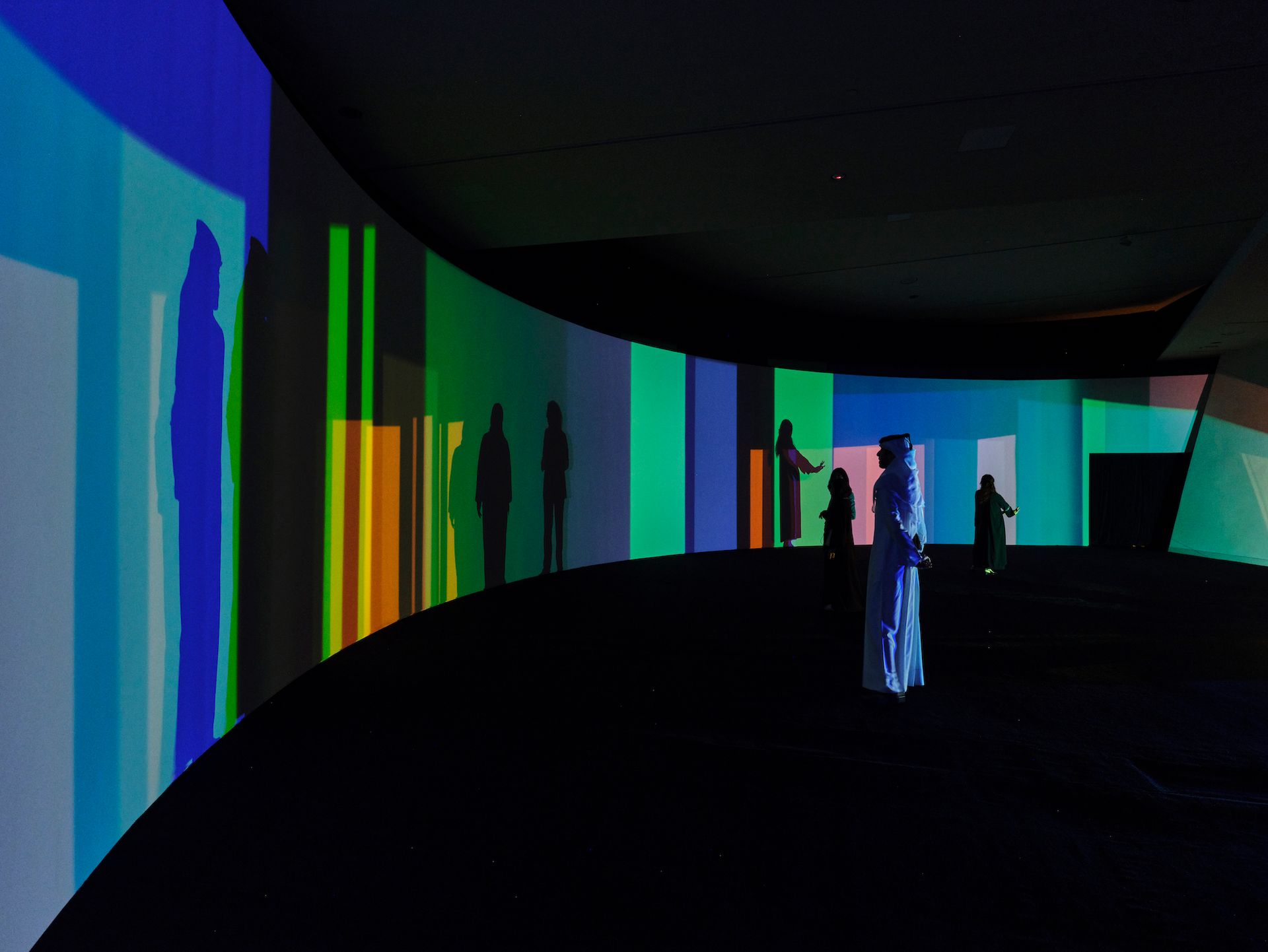
Olafur Eliasson, The living lighthouse, 2023. Installation view, Olafur Eliasson: The curious desert, National Museum of Qatar, Doha, 2023 Photo: Anders Sune Berg. Courtesy of the artist; neugerriemschneider, Berlin; Tanya Bonakdar Gallery, New York / Los Angeles
In contrast to this rainbow-toned environment, the adjacent gallery features several hypnotising round canvases in shades of black and cream, which directly link the exhibition’s indoor and outdoor components. Each of these paintings was created in the desert by drawing machines, which slowly rotate a canvas on motors as a wind-powered drawing utensil, containing water mixed with black and white pigments, slowly drips onto the surface.
Three of the 12 circular, open-air desert pavilions contain drawing machines, but nearly all rely on the sun, wind and salt of the local conditions. In the two Solar-drawing observatory pavilions, the Solar incense burner uses the sun’s rays to emit typical Qatari scents, such as oud and amber. Each incense burns for exactly an hour, marking the time of day like a clock. In the City lab for desalination architecture pavilion, suspended ropes collect saltwater from a nearby lagoon. Like the surrounding mangroves’ leaves, which naturally desalinate the water, the ropes have formed a sculptural salt crust.
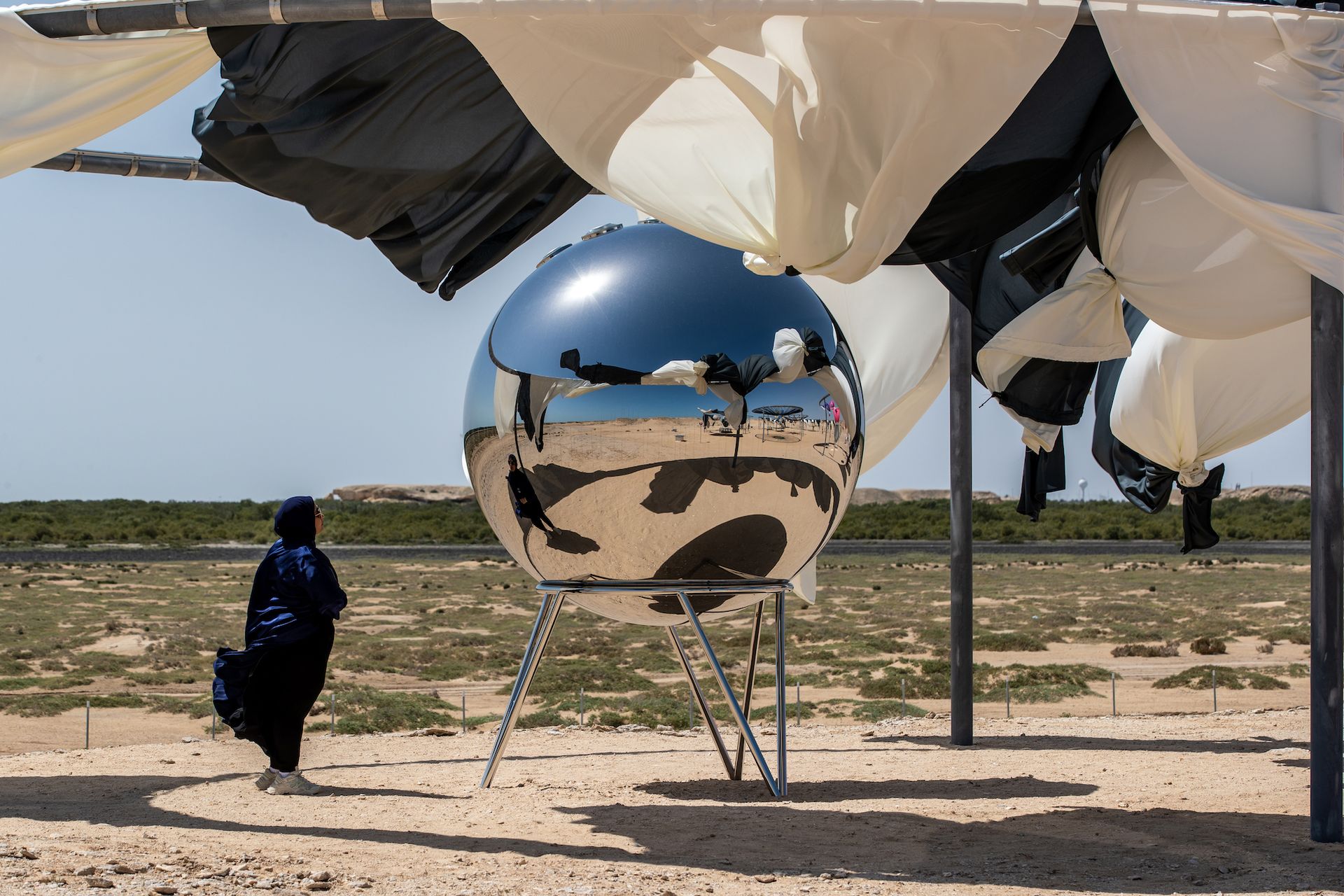
Olafur Eliasson, Rainbow incubator, 2023. Installation view, Olafur Eliasson: The curious desert, near the Al Thakhira Mangrove in Northern Qatar, 2023 Photo: Ali Faisal Alanssari, Qatar Museums. Courtesy of the artist; neugerriemschneider, Berlin; Tanya Bonakdar Gallery, New York / Los Angeles
Other pavilions reference Doha, the Nordic landscape and a shared need for ecological awareness. Your obsidian garden was informed by Eliasson’s hikes through volcanic obsidian fields in the Icelandic highlands, while Your glacial-dust garden features minerally rich glacial rock dust from Greenland, which can be used to revitalise depleted soil. Composed of clear and coloured glass spheres, Your pearl garden conjures dew drops that coat the desert each morning and speaks to Qatar’s history as an important pearling city. Your oil-spill garden centres tar residue that was found on a Qatari beach after an oil spill. Eliasson stresses the need for countries in the Middle East, whose economies are largely based on fossil fuels, to find alternative sources of energy and income.
“Qatar is very interesting because, like all Gulf countries, it is extremely vulnerable to climate change—the sabkha site where the pavilions are is likely to be underwater in as few as 70 years,” Eliasson says. “But unlike the other countries who have been hit significantly by sea level rise, Qatar has the means and knowledge to do something about it.” He adds that Qatar is one of the few countries in the region that contributes data to the United Nations’ climate reports.
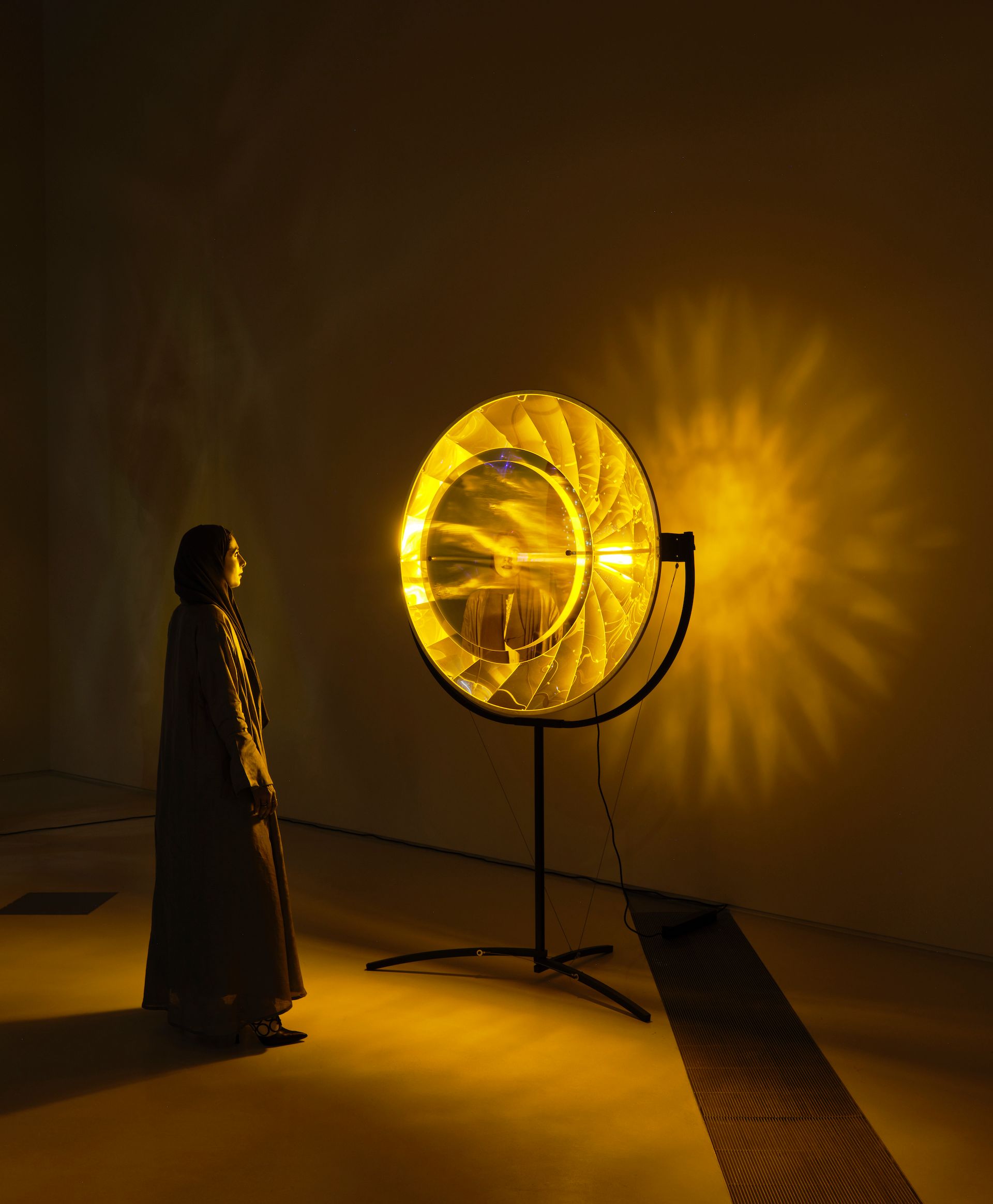
Olafur Eliasson, Eye see you, 2006. Installation view, Olafur Eliasson: The curious desert, National Museum of Qatar, Doha, 2023. Photo: Anders Sune Berg. Courtesy of the artist; neugerriemschneider, Berlin; Tanya Bonakdar Gallery, New York / Los Angeles
The artist has been in constant dialogue with Qatar’s cultural, environmental and ecological leaders during the nearly decade-long development of The curious desert, not only in order to be as sensitive as possible to the locale, but also to ensure his impact outlasts the six-month exhibition. “Everyone in the world is trying to come up with a sustainable idea about why tomorrow is different than yesterday,” he says, “and the complexity of that is where art and culture can say something.”
- Olafur Eliasson: The curious desert, until 15 August, National Museum of Qatar and Al Thakhira Mangrove Nature Preserve. Starting 25 March, a free shuttle bus to the outdoor installation will depart from the National Museum of Qatar every Saturday.


